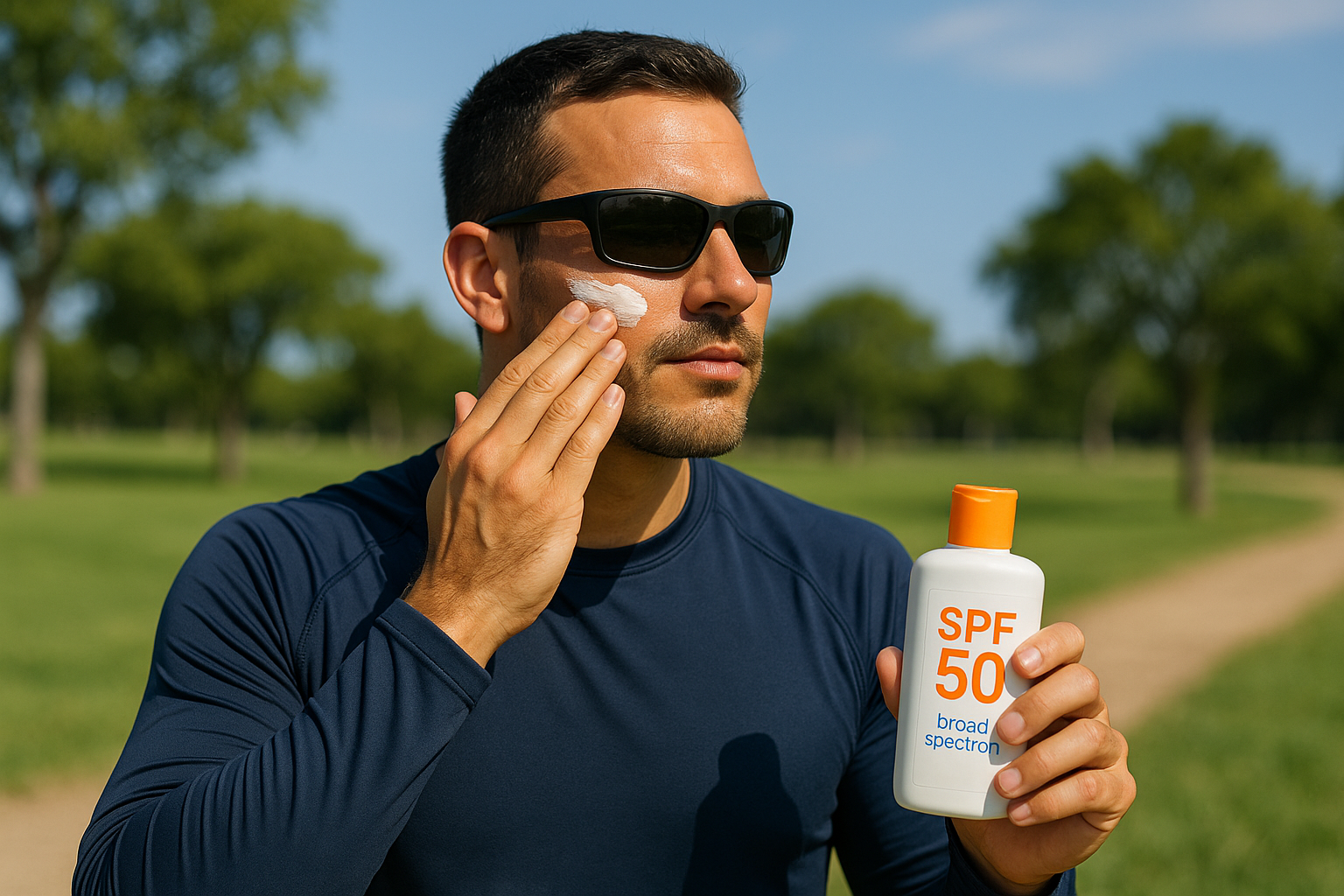If you spend a significant amount of time outdoors — whether for work, sport, or leisure — your skin faces constant exposure to ultraviolet (UV) rays, wind, pollution, and temperature changes. While the sun provides vital Vitamin D, prolonged exposure can accelerate aging, dehydrate the skin, and increase the risk of damage and disease.
This article offers essential skincare strategies to protect, soothe, and nourish your skin, helping you enjoy the sun while preserving a radiant, healthy complexion.
1. Why Sun Exposure Demands Special Skincare
Sunlight contains two main types of ultraviolet rays:
- UVA rays penetrate deep into the skin, contributing to premature aging.
- UVB rays are responsible for sunburns and play a major role in skin cancer development.
Even on cloudy days or during winter, UV rays can damage unprotected skin. That’s why daily sun care is non-negotiable for anyone who spends time outdoors regularly.
2. Apply Broad-Spectrum Sunscreen Daily
Sunscreen is your first and most important line of defense.
✅ What to Look For:
- Broad-spectrum protection (UVA + UVB)
- SPF 30 or higher
- Water-resistant formulas if sweating or swimming
- Mineral options (zinc oxide or titanium dioxide) for sensitive skin
✅ Best Practices:
- Apply 30 minutes before going outside
- Use a nickel-sized amount for the face and 1 oz (shot glass) for the body
- Reapply every 2 hours, or after sweating or swimming
Don’t forget overlooked areas like:
- Ears
- Neck
- Back of hands
- Tops of feet
- Scalp (or wear a hat)
3. Wear Physical Barriers for Extra Protection
Complement sunscreen with physical protection.
Options Include:
- Wide-brimmed hats
- UV-protective clothing
- Sunglasses with UV-blocking lenses
- Umbrellas or seeking shade during peak hours (10 a.m. – 4 p.m.)
These help reduce cumulative exposure and ease the burden on your skincare products.
4. Hydrate Continuously — Inside and Out
Sun exposure can rapidly dehydrate your skin, making it look dull, rough, and tight.
Internal Hydration:
- Drink 2–3 liters of water daily
- Include hydrating foods: watermelon, cucumber, oranges
External Hydration:
- Use a moisturizer with humectants like hyaluronic acid, glycerin, or aloe vera
- Apply moisturizer immediately after showering to lock in hydration
In high sun areas, a hydrating mist can be a great on-the-go refresh for dry skin.
5. Incorporate Antioxidants into Your Routine
UV rays generate free radicals, which damage collagen, elastin, and DNA. Antioxidants neutralize this oxidative stress.
Best Antioxidants:
- Vitamin C: Brightens and protects
- Vitamin E: Repairs and soothes
- Niacinamide: Strengthens the skin barrier
- Green tea extract: Reduces inflammation
Apply antioxidant serums in the morning, under your sunscreen, for added protection.
6. Soothe Skin After Sun Exposure
Even with prevention, occasional redness or tightness may occur. Prompt care prevents peeling, dryness, and long-term damage.
Post-Sun Relief:
- Apply aloe vera gel or after-sun lotion with panthenol
- Use cool (not cold) compresses on hot areas
- Avoid harsh exfoliants or actives until the skin calms
- Take lukewarm showers and avoid hot water
7. Repair at Night
Nighttime is your opportunity to support recovery.
PM Routine for Sun-Exposed Skin:
- Cleanser: Gentle, hydrating formula
- Toner: Soothing with chamomile or rose water
- Serum: Antioxidant-rich or peptide-based
- Moisturizer: Ceramides or squalane for barrier support
Avoid retinol or strong acids the day after heavy sun exposure unless your skin is fully calm and hydrated.
8. Exfoliate Gently and Strategically
Exfoliation helps remove dead skin cells, but excessive exfoliation on sun-exposed skin can cause irritation.
Use:
- Enzyme exfoliants (like papaya or pumpkin)
- Lactic acid (gentler than glycolic)
- Once a week for sensitive or tanned skin
Avoid physical scrubs with large particles, which can scratch and inflame.
9. Avoid Photosensitizing Products
Some skincare and medications can make your skin more sensitive to sunlight.
Common Photosensitizers:
- Retinoids (retinol, tretinoin)
- Alpha hydroxy acids (glycolic acid)
- Benzoyl peroxide
- Certain antibiotics or acne medications
Use these only at night and be extra vigilant with sunscreen during the day.
10. Monitor for Signs of Skin Damage
Frequent sun exposure increases the risk of sunspots, premature aging, and even skin cancer.
Perform Monthly Self-Checks:
- Look for new or changing moles
- Watch for rough, scaly patches
- Note any sores that don’t heal
See a dermatologist annually if you’re often outdoors or have a history of sunburns.
Sample Routine for Sun-Exposed Skin
| Time | Step |
|---|---|
| Morning | Cleanser → Antioxidant Serum → Moisturizer → Sunscreen |
| Throughout | Reapply sunscreen every 2 hours |
| After Sun | Cleanser → Soothing Mask or Gel → Moisturizer |
| Night | Cleanser → Hydrating Serum → Night Cream |
Conclusion: Love the Sun, Protect Your Skin
Spending time in the sun can be a beautiful part of life, but it comes with responsibility. With proper care — from daily sunscreen to hydration and antioxidant protection — your skin can remain vibrant, resilient, and youthful for years to come.
Sun safety is not just seasonal; it’s a year-round commitment to your skin’s health and beauty.
☀️ Protect your glow. Defend your skin. Shine safely.
